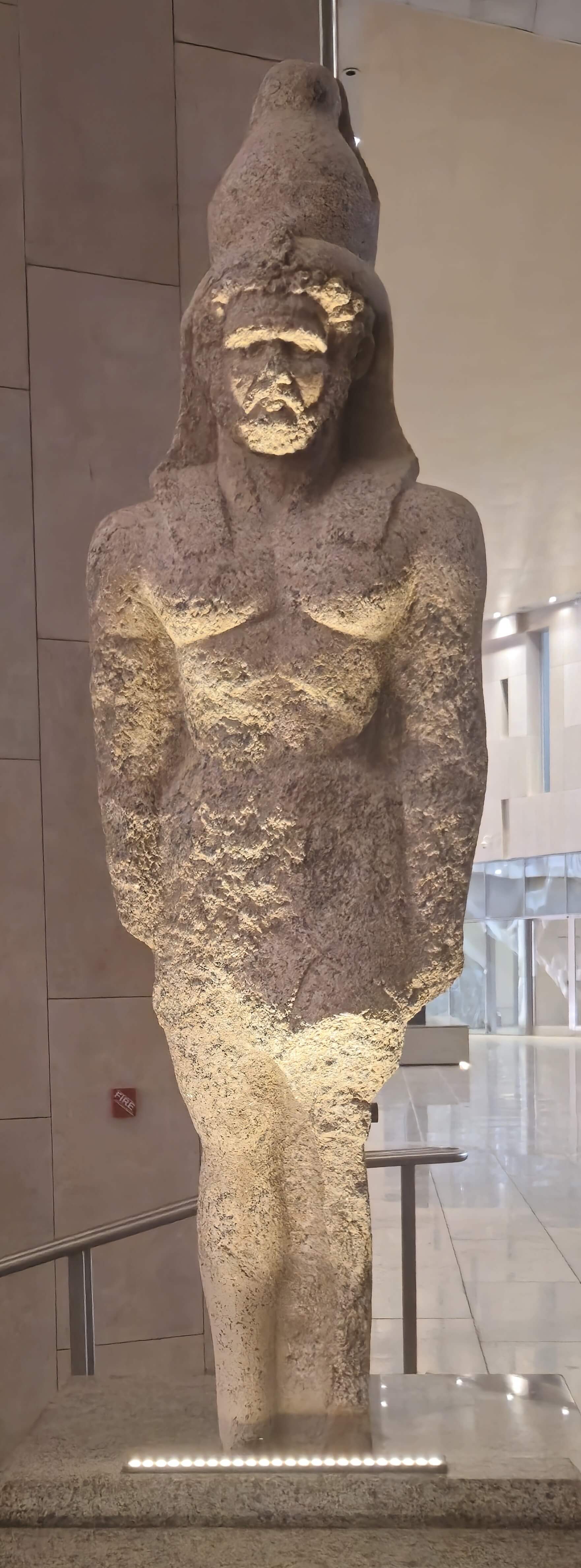
GEM 6730
Statue of Roman Emperor Caracalla
In the early 3rd century CE, Egypt was no longer ruled by native pharaohs or Greek Ptolemies, but had become a vital province of the Roman Empire. Yet despite the shift in political power, the visual language of kingship in Egypt remained deeply rooted in pharaonic tradition. A compelling example of this blend of imperial identity and Egyptian heritage is the Statue of Roman Emperor Caracalla, which dates to his reign between 198 and 217 CE.
Discovered in Sheikh Fadl, Middle Egypt, this statue reflects how Roman emperors—especially when portrayed in Egyptian settings—adopted the formal conventions of ancient Egyptian art to express authority and continuity. Though Caracalla appears with Roman facial features and hairstyle, the rest of the statue conforms to the traditional canon of Egyptian royal representation. He wears the double crown of Upper and Lower Egypt, the nemes headdress, and the pleated shendyt kilt, signaling his identification with pharaohs of old.
This visual fusion was no accident. In Roman Egypt, emperors sought to legitimize their rule among native Egyptians by presenting themselves not just as fo ... Узнайте больше с Премиум!
Разблокируйте полную историю этого артефактаПерейдите на Премиум, чтобы получить полный доступ к описанию, аудиогидам и эксклюзивному контенту для всех артефактов.Получите полный доступ к аудио и описанию главных экспонатов ГЕМ за 1.99$
Ищете другой артефакт?